The snap-jaw mechanism in the Dracula ant, Mystrium camillae
In the recently published article “Snap-jaw morphology is specialized for high-speed power amplification in the Dracula ant, Mystrium
A Photoblog contribution by Fred Larabee

Fred Larabee in the field searching (unsuccessfully) for Mystrium snap jaw ants in Australia. He did find many other trap-jaw ants and a profound love for Nutella. (© Fred Larabee)

Fred Larabee in the field searching (unsuccessfully) for Mystrium snap jaw ants in Australia. Here he is digging up a colony of Odontomachus trap-jaw ants. (© Fred Larabee)
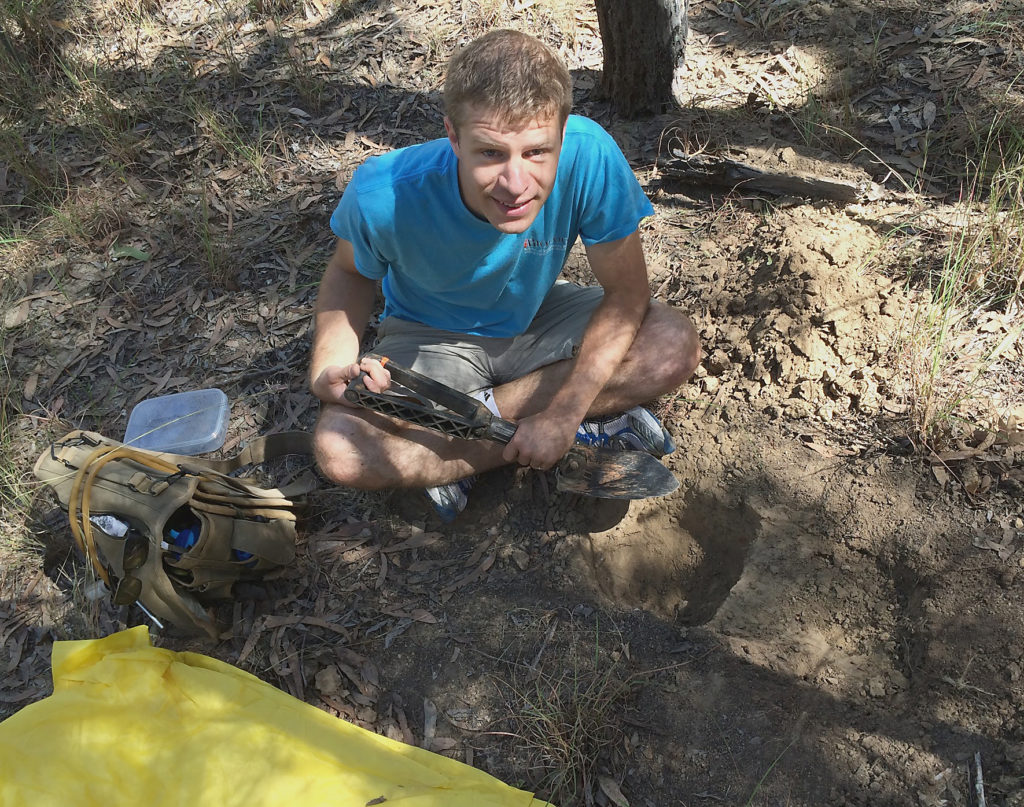
Fred Larabee in the field searching (unsuccessfully) for Mystrium snap jaw ants in Cambodia. Here he is collecting a colony of Odontomachus trap-jaw ants. (© Stephane DeGreef)
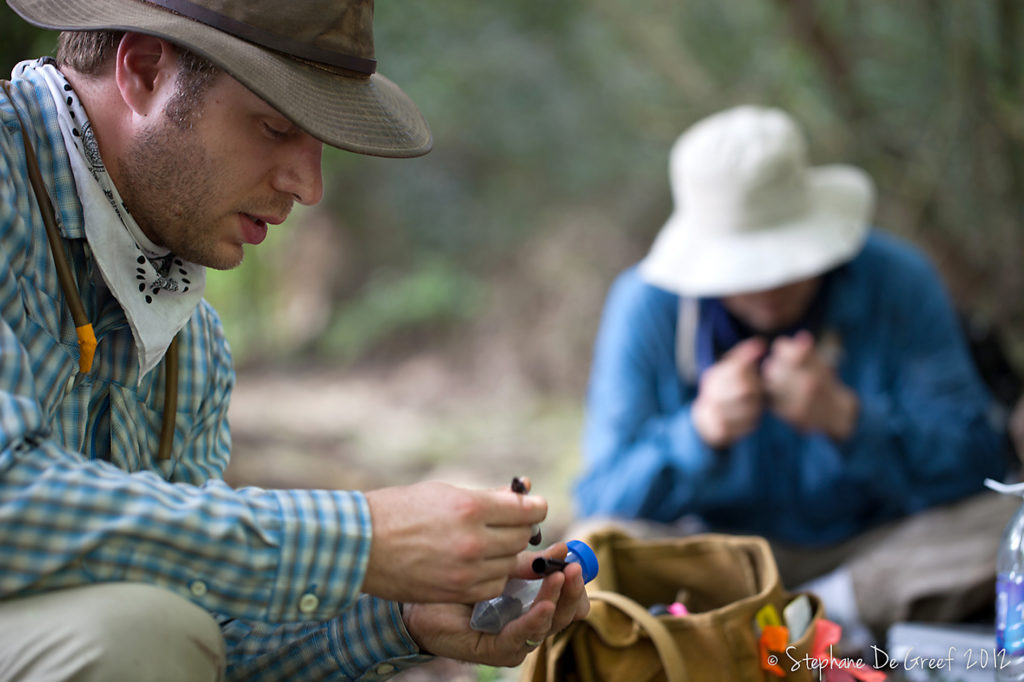
Fred Larabee filming the mandible strikes of snap-jaw ants with a high-speed camera. In order to visualize the entire movement, snaps had to be filmed at 480,000 frames per second. (© Adrian Smith)
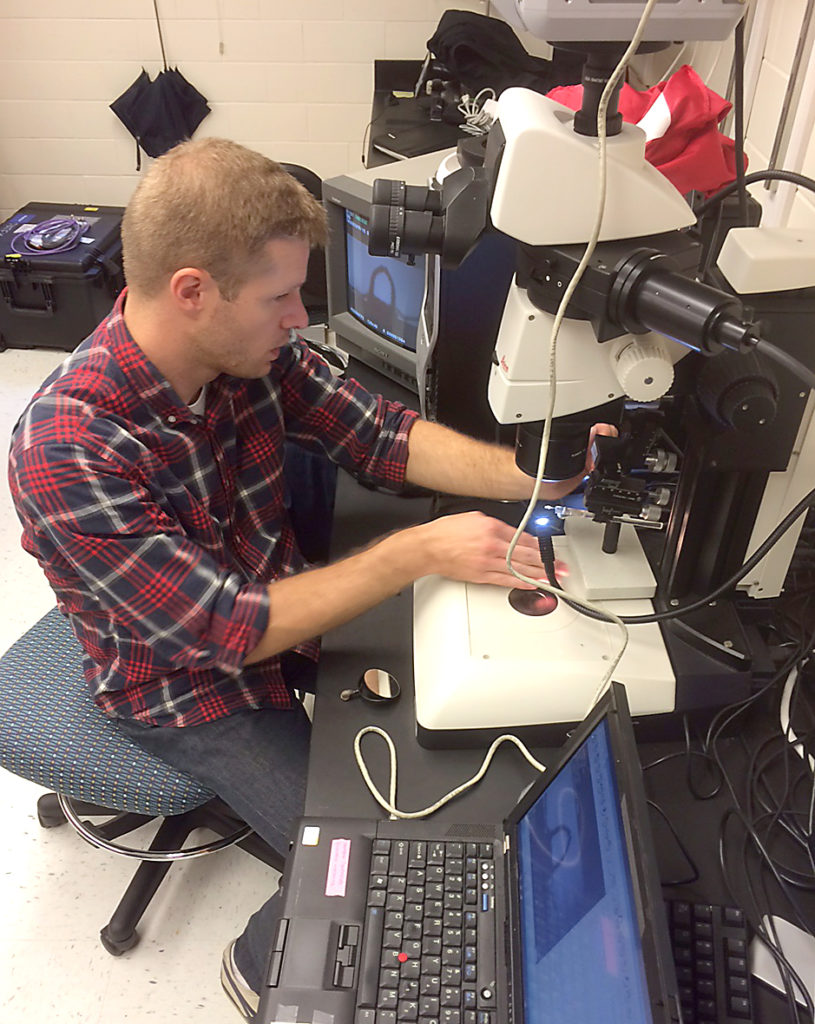
Still image of a major worker of Mystrium camillae, also called snap-jaw dracula ants. These ants are known for their snapping mandibles that they use to disable prey. The mandibles operate similar to a finger snap, with the tips pressing together while the bases deform to store elastic energy. When the ants are ready to strike, the mandibles slide across each other and reach peak speeds of 90 m/s and accelerations above 10^6 g. (© Adrian Smith)
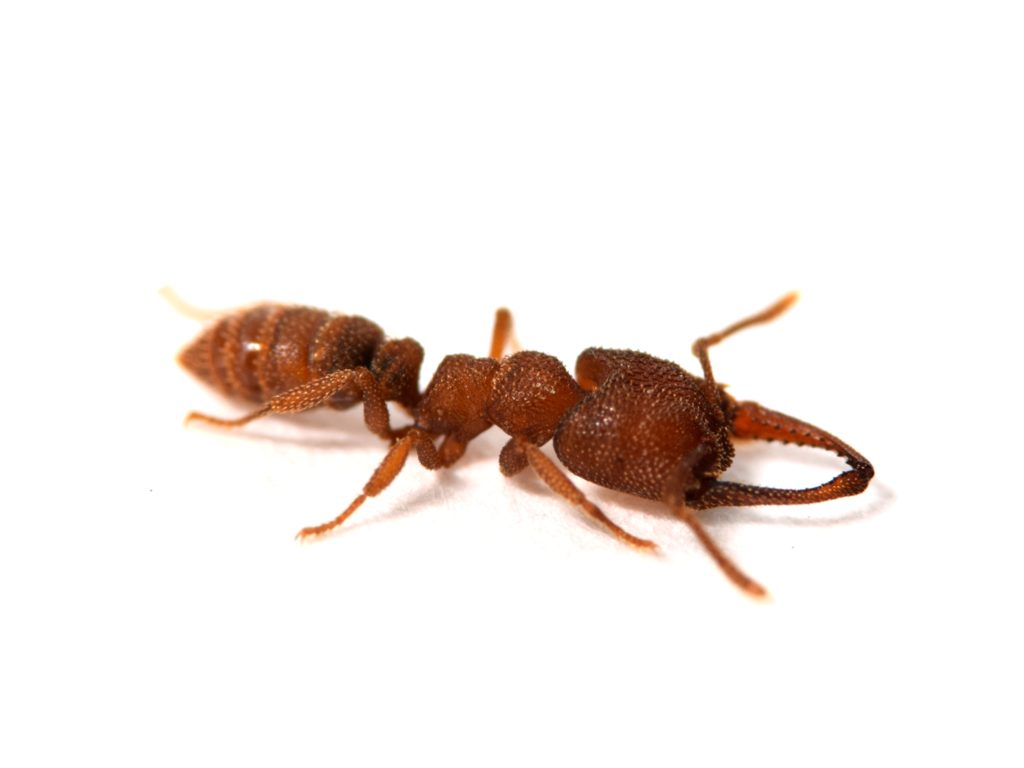
Example of a finite element analysis performed on a Mystrium snapping mandible. This method allows calculation of the stresses and strains that a structure experiences in response to an applied load (e.g., a muscle contraction). The colored contours on the 3D model display the magnitude and distribution of stress. By comparing how snapping mandibles and biting mandibles respond to the load of the mandible adductor muscle, we were able to conclude that snapping mandibles are more likely to bend than biting mandibles. This makes snapping jaws better suited to their function as a spring than biting mandibles, which must resist deformation. (© Fred Larabee)

A virtual section of a Mystrium camillae head from a microCT scan. These scans can be used to examine internal anatomy of a specimen, like muscle morphology, geometry, and volumes. (© Fred Larabee)
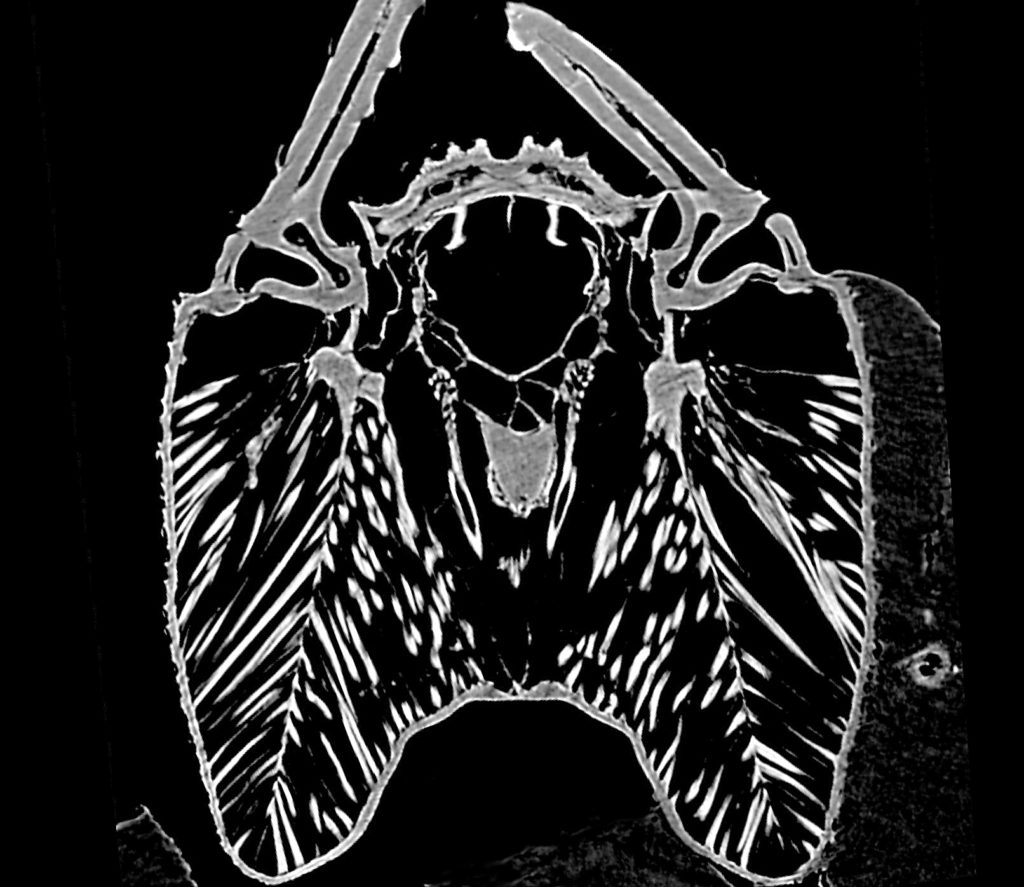
High-speed video (1000 frames per second) of the loading phase of a Mystrium mandible strike. This video demonstrates the bending of the mandibles and their function as a spring [MNB: Due to WordPress upload limitations, the video was down-scaled; if it is pixelated, please play a second time]. (© Adrian Smith)
Video showing a 3D surface model of a Mystrium major worker mandible. (© Fred Larabee)
Jack Longino (left) and Brian Fisher (right): Brian Fisher organized the Ant Course and permits to collect the snapping ants under study. (© Doug Booher)
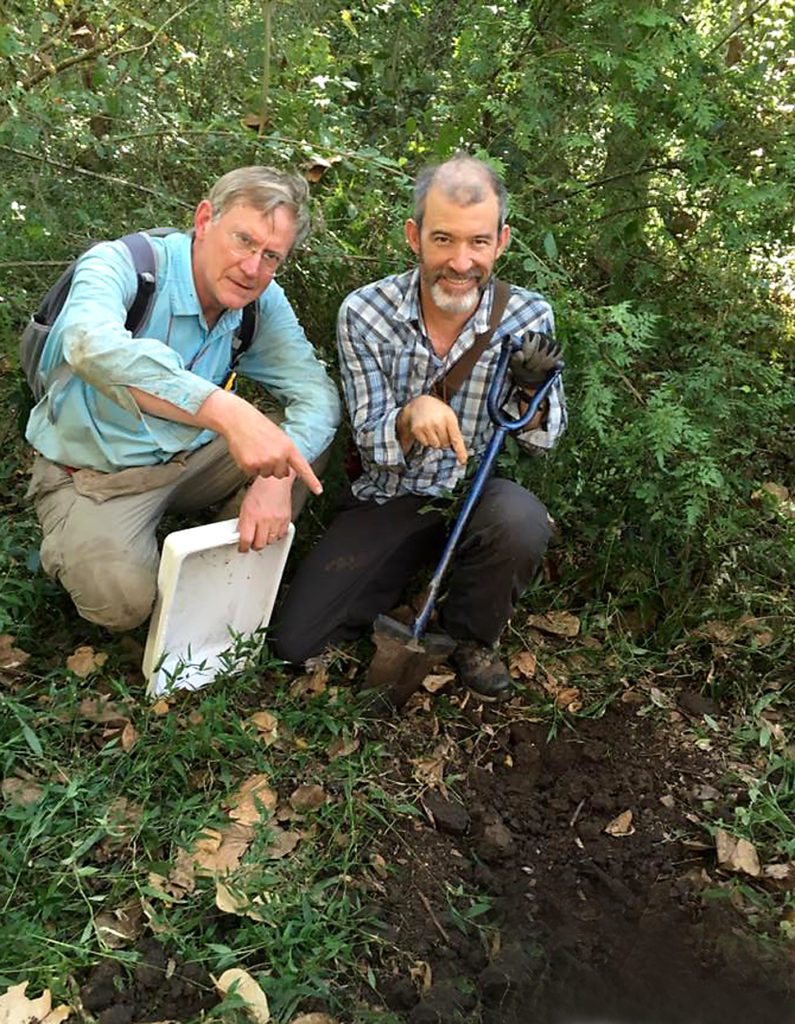
Ant Course 2014: Ant Course participants dig up a Mystrium camillae colony in Maliau Basin, Sabah, Borneo. (© Roberto Keller)



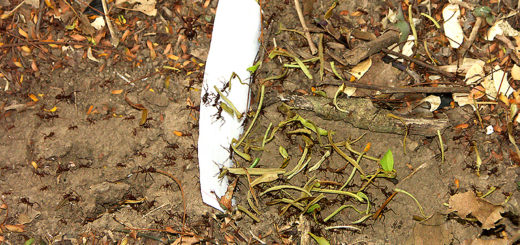

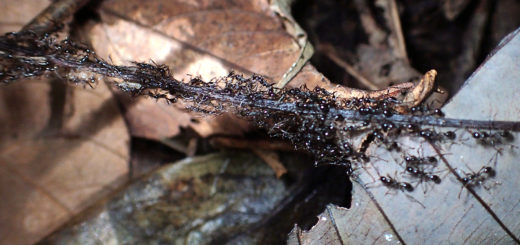
Dear Fred,
what is the effect of this mandibular action? A hole in a heavily-armored cuticule of a prey or enemy? Short-term neuronal paralysis allowing to apply the stinger without risk to suffer own injury?
With best wishes
Bernhard
Great article!!!